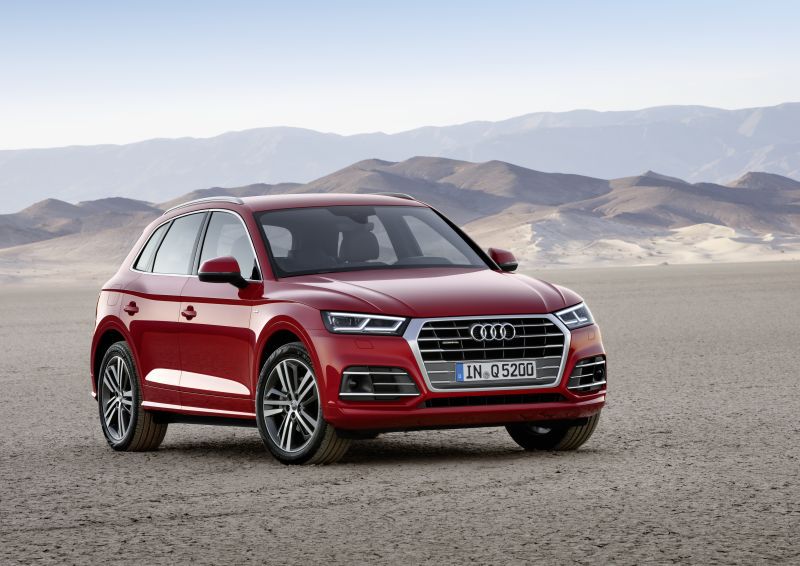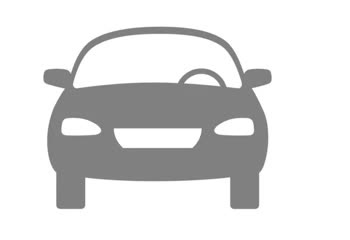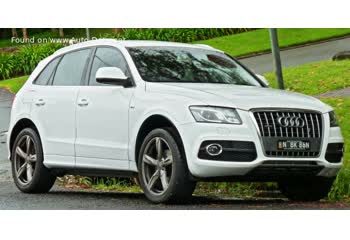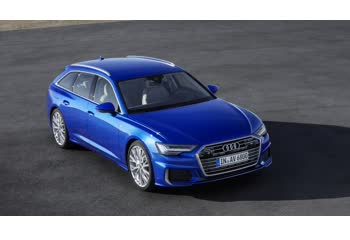Everything you need to know about specifications and performance - Audi Q5 2019 - 55 TFSI e (367 Hp) Plug-in Hybrid quattro S tronic

Overview:
What is the engine capacity of a Audi Q5 2019?
The engine capacity of the Audi Q5 2019 is 1984.
Audi Q5 2019 How many horsepower?
The engine power of the Audi Q5 2019 is 252 Hp.
What is the Audi Q5 2019 engine?
Audi Q5 2019 engine is DLGA. (Click to see other cars using the same engine)
How powerful is the electrical system in the Audi Q5 2019?
The power of the electrical system in the Audi Q5 2019 is 367 Hp hp.
How much gasoline does a Audi Q5 2019 consume?
The Audi Q5 2019 consumes 2.1-2.4 liters of gasoline per 100 km
General:
Brand: Audi
Model: Q5
Generation: Q5 II (FY)
Modification (Engine): 55 TFSI e (367 Hp) Plug-in Hybrid Quattro S tronic
Start of production: May, 2019
End of production: 2020
Powertrain Architecture: Plug-In Hybrid Electric Vehicles (PHEVs)
Body type: Sports Utility Vehicle (SUV)
Seats: 5
Doors: 5
Engine:
Engine systems: Particulate filter
Power: 252 hp
Power per litre: 127 hp/l
Torque: 370 nm
Engine Model/Code: DLGA
Engine displacement: 1984
Number of cylinders: 4
Engine configuration: Inline
Number of valves per cylinder: 4
Fuel injection system: Direct injection
Engine aspiration: Turbocharger, Intercooler
Valvetrain: DOHC
Engine oil capacity: 5.2 l
Coolant: 18 l
Engine layout: Front, Longitudinal
Cylinder Bore: 82.5 mm
Piston Stroke: 92.8 mm
Compression ratio: 9.6:1
Performance:
Fuel Type: Petrol / electricity
Combined fuel consumption (WLTP): 2.1-2.6 l/100 km
Fuel consumption (economy) - combined: 2.1-2.4 l/100 km
Emission standard: Euro 6d-Temp
Acceleration 0 - 100 km/h: 5.3 sec
Acceleration 0 - 62 mph: 5.3 sec
Maximum speed: 239 km/h, Electronically limited
Weight-to-power ratio: 5.6 kg/Hp, 179.9 Hp/tonne
Weight-to-torque ratio: 4.1 kg/Nm, 245.1 Nm/tonne
Max speed (electric): 135 km/h
Acceleration 0 - 60 mph: 5 sec
Electric system:
Gross battery capacity: 14.1 kWh
Battery technology: Lithium-ion (Li-Ion)
Battery location: Under the trunk
System power: 367 hp
System torque: 500 nm @ 1250 rpm.
All-electric range: 40 km
Electric motor power: 143 hp
Electric motor Torque: 350 nm
Average Energy consumption: 17.5-19.1 kWh/100 km
Electric motor location: Between the combustion Engine and the transmission
Electric motor type: Synchronous
All-electric range (WLTP): 40 km
Battery voltage: 381 V
Recuperation output: 80 kW
Space:
Kerb Weight (kg): 2040
Max. weight (kg): 2620
Max. roof load: 75 kg
Max load (kg): 580
Trunk (boot) space - minimum: 395 l
Permitted trailer load with brakes (12%): 1750 kg
Fuel tank capacity: 54 l
Permitted trailer load without brakes: 750 kg
Permitted towbar download: 100 kg
Permitted trailer load with brakes (8%): 1750 kg
dimensions:
Length: 4663 mm
Width: 1893 mm
Height: 1659 mm
wheelbase: 2819 mm
Width including mirrors: 2140 mm
Front track: 1616 mm
Rear (Back) track: 1609 mm
Front overhang: 899 mm
Rear overhang: 945 mm
Minimum turning circle (turning diameter): 12 m
Approach angle: 18.2°
Departure angle: 23°
Powertrain, Suspension and Brakes:
Drivetrain Architecture: The Internal combustion Engine (ICE) and the electric motor permanently drive the front wheels of the vehicle, capable of running in full electric or mixed mode, and if necessary through the electrically or mechanically controlled clutch, the rear wheels
Drive wheel: All wheel drive (4x4)
Number of gears and type of gearbox: 7 gears, automatic transmission S tronic
Front brakes: Ventilated discs
Rear brakes: Ventilated discs
Assisting systems: ABS (Anti-lock braking system)
Steering type: Steering rack and pinion
Power steering: Electric Steering
Tires size: 235/60 R18
Wheel rims size: 8J x 18
Front suspension: Independent multi-link suspension
Rear suspension: Independent multi-link suspension
See also

Last generation.
Its production began in 2024 until Now

Other generation.
Its production began in 2008 until 2009

Same engine. (DLGA).
Its production began in 2021 until 2023

Write a comment